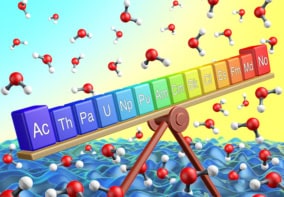The US physicist Ralph Alpher, whose pioneering calculations supported the concept of the Big Bang, has died at the age of 86. Working with George Gamow and Ralph Herman in the late 1940s, Alpher made the first attempt to calculate the abundance of elements created in the hot early universe and also predicted the temperature of the radiation left over from the Big Bang. Although this "cosmic microwave background" was discovered in 1964, Alpher's contributions to the birth of cosmology went largely unrecognized.

Born into a Jewish family in Washington DC on 3 February 1921, Ralph Alpher studied at George Washington University. It was here that he met Gamow, who took him on as a PhD student. Together Alpher and Gamow began calculating the relative abundance of elements that would be produced in a hot Big Bang.
The pair assumed that the early universe was very hot and full of neutrons. Nuclei then formed by capturing neutrons one at a time, with the occasional nucleus decaying to produce a heavier nucleus plus an electron and a neutrino. Their calculations correctly showed that the abundance of elements in the universe should decrease with atomic mass.
However, this early version of “Big Bang nucleosynthesis” could not explain the origin of all the chemical elements as Alpher and Gamow had hoped — we now know that elements heavier than lithium are produced in the interior of stars. Nevertheless, their calculations did mark the start of cosmology as a branch of physics by providing estimates for nuclear abundances that could be checked with experiment.
Alpher and Gamow reported their calculations in a paper published in 1948 (Phys. Rev. 73 803). Gamow famously invited the physicist Hans Bethe to be a co-author so that the paper was written by “Alpher, Bethe, Gamow” as a pun on the first three letters of the Greek alphabet. Bethe, however, had contributed almost nothing to the work.
Several months later, Alpher and Robert Herman from Johns Hopkins University published a separate paper predicting that the radiation left over from the Big Bang would have a temperature of 5K. Arno Penzias and Robert Wilson of Bell Labs later shared the 1978 Nobel Prize for Physics for discovering this cosmic microwave background, which has a temperature of 2.7K.
However, Alpher’s contribution went largely unrecognized partly because he left cosmology and joined General Electric’s research centre in Schenectady in New York in 1955. Alpher later moved to Union College in 1986, where he was emeritus professor. He was, however, awarded the US National Medal of Science in 2005. Alpher and Herman also wrote a book about their early work entitled Genesis of the Big Bang in 2001.



